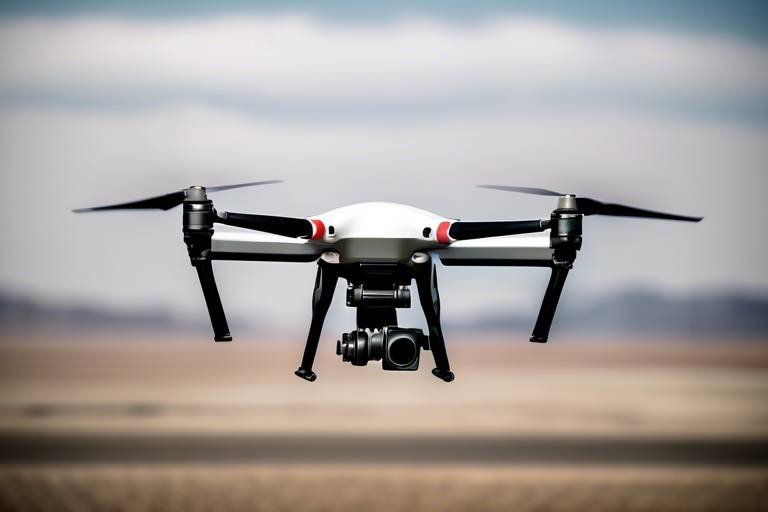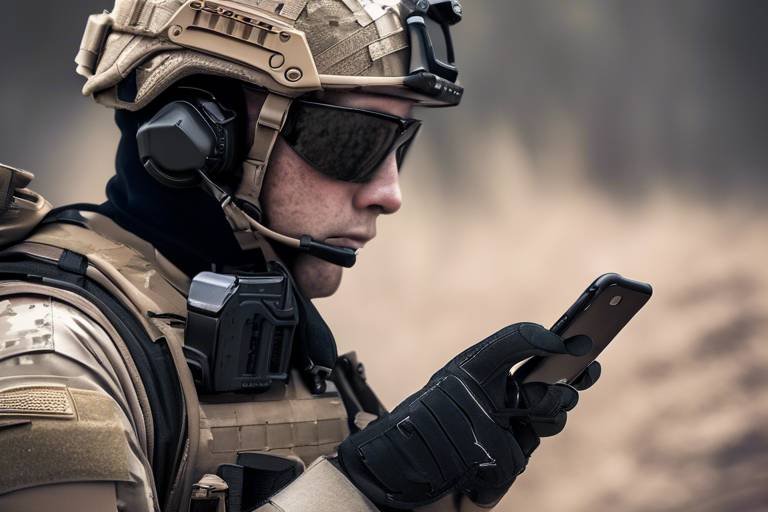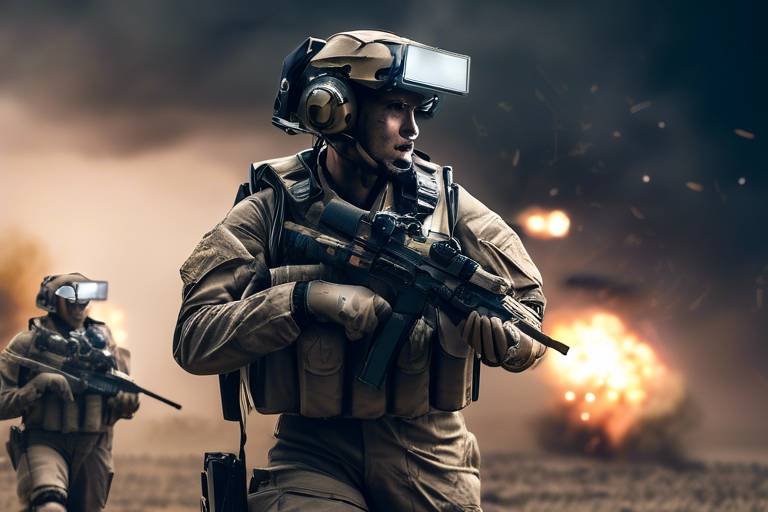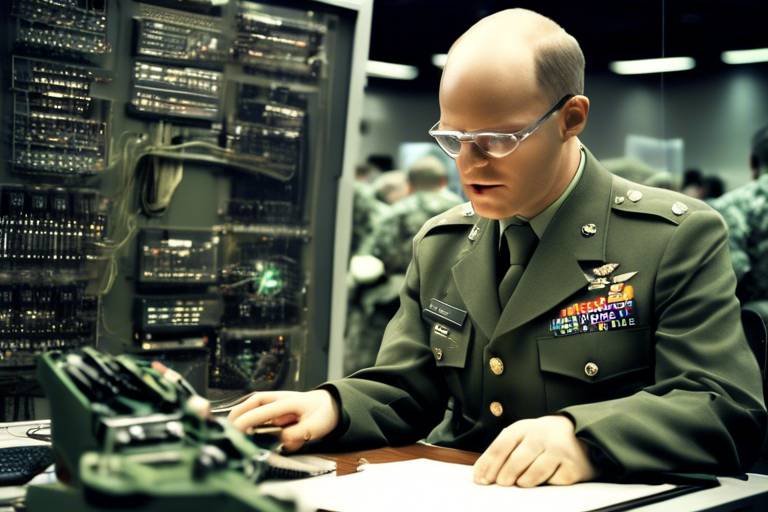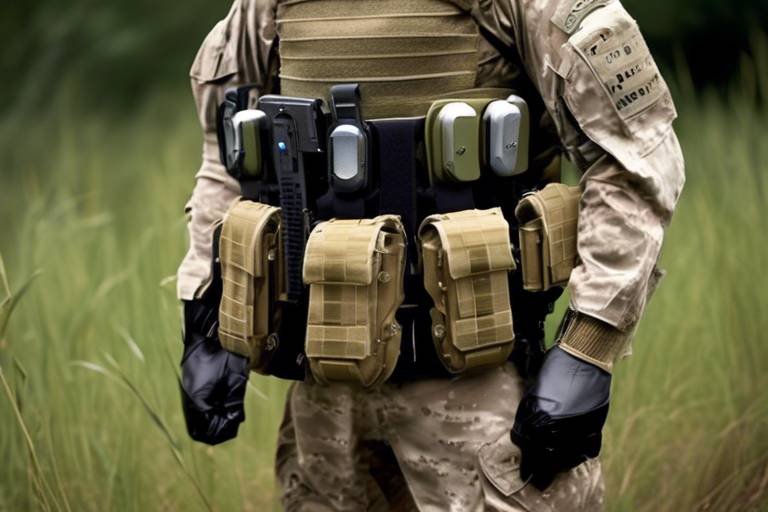How Drones are Shaping Military Surveillance Operations
Drones have revolutionized the landscape of military surveillance, bringing forth a new era of technological prowess and strategic advantage. These unmanned aerial vehicles (UAVs) are not just flying machines; they are sophisticated tools that provide critical intelligence, enhance operational efficiency, and redefine how military forces engage with threats. Imagine a bird's-eye view of the battlefield, offering real-time insights and data that were once the stuff of science fiction. The integration of drones into military operations has fundamentally altered the dynamics of surveillance, making it more precise, less intrusive, and significantly safer for personnel on the ground.
The evolution of drone technology has been nothing short of remarkable. From their early inception as simple reconnaissance tools to the advanced systems we see today, military drones have undergone significant transformations. They are now equipped with cutting-edge technologies that allow for high-definition imaging, seamless data transmission, and even artificial intelligence capabilities. This advancement not only enhances their functionality but also allows for quicker decision-making in high-stakes environments.
One of the most compelling aspects of drone surveillance is its ability to operate in diverse environments and conditions. Whether it's a dense urban area or a remote desert, drones can adapt and provide valuable insights. They can fly at various altitudes, navigate complex terrains, and gather intelligence without putting human lives at risk. This capability is crucial in modern warfare, where the lines between combatants and civilians can often blur, and the need for precise information is paramount.
However, with great power comes great responsibility. The deployment of drones in military operations raises numerous ethical questions. How do we balance the need for security with the rights of individuals? As drones become more prevalent, the potential for surveillance overreach increases, leading to concerns about privacy and the potential for misuse of data. Military personnel must navigate these moral dilemmas while ensuring that their operations remain transparent and accountable.
As we look to the future, the trajectory of drone technology promises even more exciting developments. Innovations in artificial intelligence, machine learning, and data analytics will likely enhance the capabilities of military drones, allowing for even more sophisticated surveillance operations. This evolution will not only impact military strategies but could also redefine global security dynamics, as nations adapt to the new realities of warfare.
- What are military drones used for? Military drones are primarily used for reconnaissance, surveillance, and intelligence gathering. They can also be equipped for combat missions.
- How do drones enhance military operations? Drones provide real-time data and imagery, allowing for quicker decision-making and more effective tactical planning.
- What are the ethical concerns surrounding military drones? Ethical concerns include privacy issues, the potential for civilian casualties, and the moral responsibilities of operators.
- What advancements can we expect in drone technology? Future advancements may include improved AI capabilities, enhanced sensor technologies, and greater autonomy in operations.

The Evolution of Military Drones
The journey of military drones, often referred to as Unmanned Aerial Vehicles (UAVs), is nothing short of fascinating. It all began during World War I when the concept of using remote-controlled aircraft was first explored. The Kettering Bug, developed in 1918, is often hailed as the first true drone, designed to carry explosives over enemy lines. Fast forward to the 21st century, and we find ourselves in an era where drones are equipped with cutting-edge technology, capable of performing complex surveillance missions with remarkable precision.
Throughout the decades, military drones have undergone significant transformations, driven by advancements in technology and the evolving nature of warfare. The 1960s marked a pivotal moment with the introduction of the Ryan Firebee, which was used for reconnaissance missions during the Vietnam War. This period highlighted the potential of drones for gathering intelligence without risking pilot lives. As the Cold War progressed, more sophisticated UAVs emerged, paving the way for modern surveillance operations.
By the late 1990s and early 2000s, the introduction of the Predator drone revolutionized military surveillance. Equipped with cameras and sensors, the Predator was not just a reconnaissance tool but also a platform for targeted strikes. This marked a significant shift in military strategy, as drones began to play a dual role in both surveillance and combat operations. The ability to conduct real-time surveillance and engage targets without putting personnel in harm's way was a game-changer for military operations.
Today, military drones are equipped with an array of advanced technologies, including high-resolution cameras, infrared sensors, and sophisticated data processing capabilities. These advancements have dramatically enhanced their effectiveness in surveillance roles. For instance, modern drones can fly at high altitudes, covering vast areas while remaining undetected. The integration of artificial intelligence (AI) has further propelled their capabilities, enabling autonomous flight and advanced target recognition.
To illustrate the evolution of military drones, consider the following table that highlights key milestones in their development:
| Year | Drone Model | Significance |
|---|---|---|
| 1918 | Kettering Bug | First true drone, designed for explosive delivery. |
| 1960s | Ryan Firebee | Used for reconnaissance missions in Vietnam. |
| 1995 | MQ-1 Predator | Revolutionized surveillance and targeted strikes. |
| 2005 | MQ-9 Reaper | Enhanced capabilities for both surveillance and combat. |
| 2020s | Various advanced UAVs | Integration of AI and advanced sensors for real-time data. |
As we look to the future, the evolution of military drones is set to continue. With ongoing research and development, we can expect even more sophisticated UAVs that will redefine military surveillance operations. The integration of new technologies will not only enhance their capabilities but also raise important questions about ethics and regulations in warfare.
- What are military drones used for? Military drones are primarily used for surveillance, reconnaissance, and targeted strikes.
- How have drones changed military strategy? Drones have allowed for real-time intelligence gathering and reduced risks to human pilots, leading to new tactical approaches in warfare.
- What are the ethical concerns surrounding military drones? Ethical concerns include issues of privacy, civilian safety, and the moral implications of remote warfare.
- What advancements can we expect in military drone technology? Future advancements may include improved AI capabilities, longer flight durations, and enhanced sensor technologies.
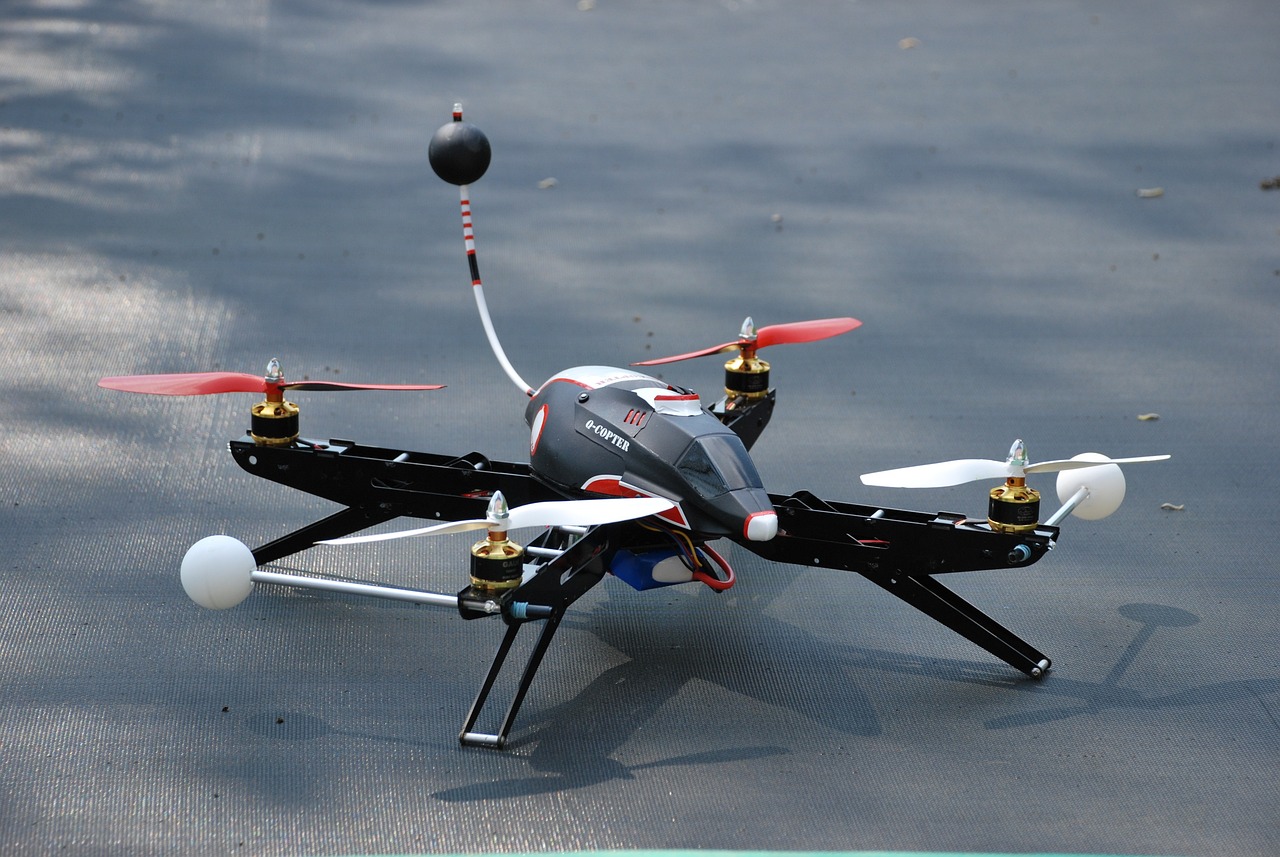
Technological Advancements in Drone Surveillance
The world of military surveillance has undergone a seismic shift thanks to the rapid technological advancements in drone capabilities. Gone are the days when drones were merely flying cameras; today, they are sophisticated machines equipped with cutting-edge technology that enhances their effectiveness in gathering intelligence. The integration of high-resolution cameras, real-time data processing, and artificial intelligence has revolutionized how military operations conduct surveillance. Imagine having a bird's-eye view of a battlefield, where every movement is captured in stunning clarity, and actionable intelligence is delivered in real-time. This is the reality of modern drone surveillance.
At the core of these advancements are the sensor technologies that empower drones to perform at unprecedented levels. Drones are now fitted with a variety of sensors, including infrared, radar, and electro-optical systems. These sensors allow for comprehensive surveillance capabilities, enabling military personnel to monitor activities in diverse environments and under various conditions. For instance, infrared sensors can detect heat signatures, making it possible to identify hidden threats even in complete darkness. In contrast, radar systems can scan vast areas, providing situational awareness that is critical during operations.
Let’s dive a bit deeper into these sensor technologies. Each type plays a unique role in enhancing the drone's surveillance capabilities:
- Infrared Sensors: These sensors are crucial for detecting heat emitted by objects, allowing for surveillance in low-visibility conditions.
- Radar Systems: They provide the ability to detect and track moving objects over long distances, making them invaluable for reconnaissance missions.
- Electro-Optical Systems: Equipped with high-definition cameras, these systems capture detailed images and videos, providing clarity and precision in intelligence gathering.
Moreover, the ability to collect vast amounts of data during surveillance missions has been enhanced through advanced data collection and analysis methods. Drones are capable of gathering information from multiple sources simultaneously, which is then processed using sophisticated algorithms to provide actionable intelligence. This data-driven approach allows military strategists to make informed decisions quickly, responding to threats with agility and precision.
As drones gather data, the challenge lies in analyzing it effectively. Military operations now utilize advanced analytics tools that can sift through the massive amounts of information collected during missions. These tools help identify patterns, detect anomalies, and generate insights that inform strategic decisions. Imagine having a team of analysts working around the clock, sifting through data to provide real-time updates on enemy movements or potential threats. This level of insight can significantly alter the course of military engagements.
Equally important are the real-time communication systems that enable drones to transmit data and imagery back to command centers instantaneously. This capability ensures that military leaders have access to live feeds and can make tactical decisions on the fly. The integration of satellite communication and secure data links means that even in the most remote locations, drones can relay crucial information without delay. Think of it as having a direct line to the battlefield, where every second counts and timely information can mean the difference between success and failure.
In conclusion, the advancements in drone surveillance technology are not just impressive; they are transformative. With high-resolution imaging, advanced sensor technologies, robust data analysis capabilities, and real-time communication systems, drones have become indispensable tools in military operations. As technology continues to evolve, we can expect even more groundbreaking innovations that will enhance surveillance efficiency and accuracy on the battlefield.
- What are the main technologies used in military drones? Military drones utilize various technologies, including high-resolution cameras, infrared sensors, radar systems, and AI capabilities for data analysis.
- How do drones enhance military surveillance? Drones provide real-time data collection, high-quality imagery, and advanced analytics, allowing for quick decision-making and improved situational awareness.
- What challenges do military drones face? Challenges include technical limitations like battery life, regulatory issues, and ethical concerns regarding privacy and civilian safety.
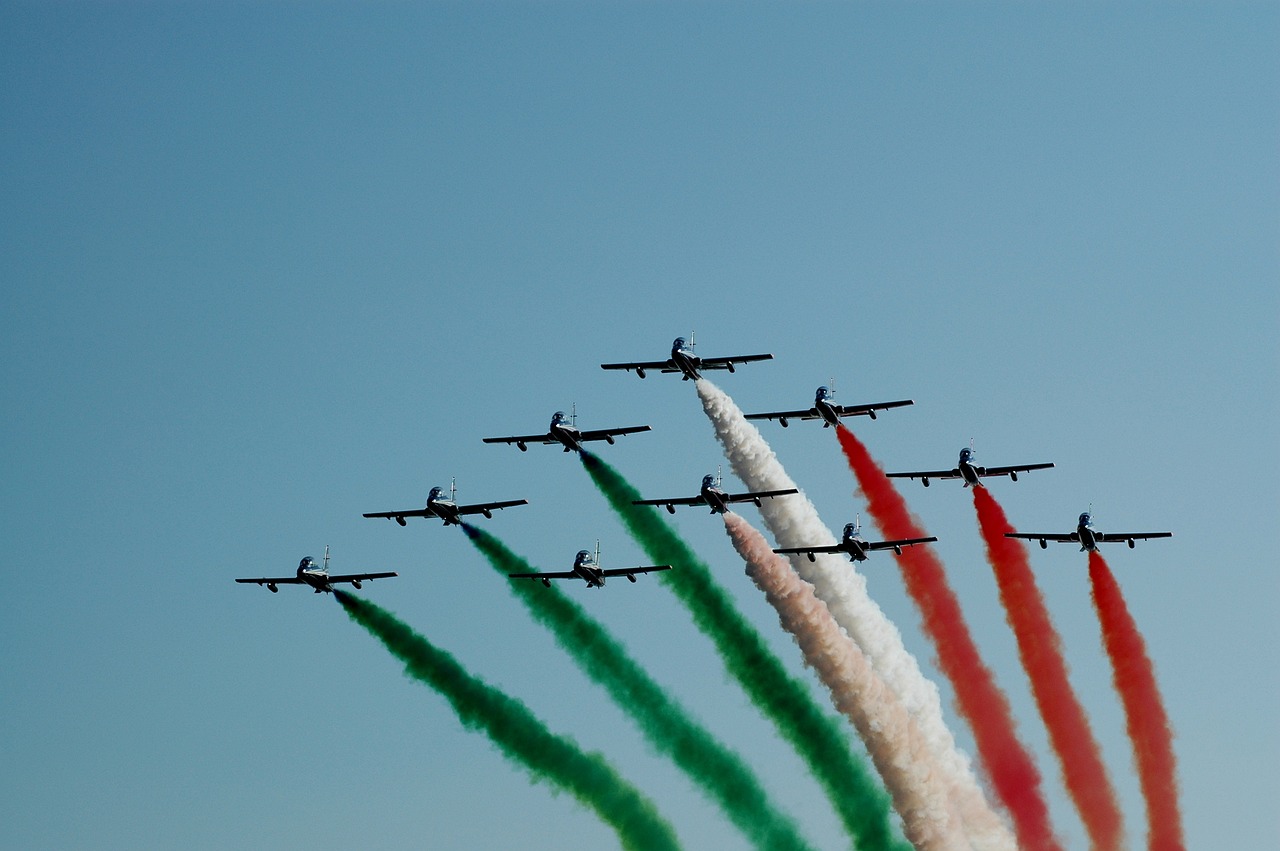
Sensor Technologies
Drones have revolutionized military surveillance primarily due to their sophisticated . These sensors are the eyes and ears of unmanned aerial vehicles (UAVs), enabling them to gather critical information from the battlefield. Imagine a hawk soaring high above, its keen eyesight capturing every detail below; that's how drones operate, but with advanced technology that enhances their capabilities far beyond natural vision.
At the heart of drone surveillance are several key sensor types, each designed to fulfill specific operational needs. Infrared sensors, for instance, excel in detecting heat signatures, making them invaluable for identifying enemy positions even in complete darkness. This capability allows military forces to conduct night operations with a level of confidence that was previously unimaginable.
Similarly, radar systems play a crucial role in tracking moving objects over vast distances. They send out radio waves that bounce back from objects, providing real-time information about their location and speed. This technology is particularly useful for monitoring large areas and can be instrumental in detecting incoming threats, such as missiles or enemy aircraft.
Another significant advancement is the integration of electro-optical systems. These systems utilize high-resolution cameras to capture detailed imagery of the terrain and targets. With capabilities for both day and night operations, electro-optical sensors can zoom in on specific areas, providing commanders with a clear view of the battlefield. The combination of these sensors allows military drones to operate effectively in various environments, whether it be urban landscapes or rugged terrains.
To further enhance their operational efficiency, many drones are equipped with multi-sensor fusion technology. This innovative approach combines data from different sensors to create a comprehensive picture of the battlefield. For example, while infrared sensors might detect heat signatures, electro-optical systems can confirm the identity of a target. This synergy not only improves accuracy but also minimizes the risk of misidentification, which can have dire consequences in military operations.
In summary, the integration of advanced sensor technologies into military drones has significantly transformed surveillance operations. These sensors provide a level of detail and insight that enhances decision-making and operational effectiveness. As technology continues to advance, we can expect even more sophisticated sensor systems to emerge, further pushing the boundaries of what military drones can achieve.
- What are the main types of sensors used in military drones?
The primary types include infrared sensors, radar systems, and electro-optical systems, each serving different surveillance needs. - How do infrared sensors work?
Infrared sensors detect heat signatures, allowing drones to identify objects and personnel even in low-light conditions. - What is multi-sensor fusion technology?
This technology combines data from various sensors to provide a more accurate and comprehensive view of the battlefield. - Can drones operate in adverse weather conditions?
While drones are equipped to handle some weather challenges, extreme conditions can still pose operational limitations.
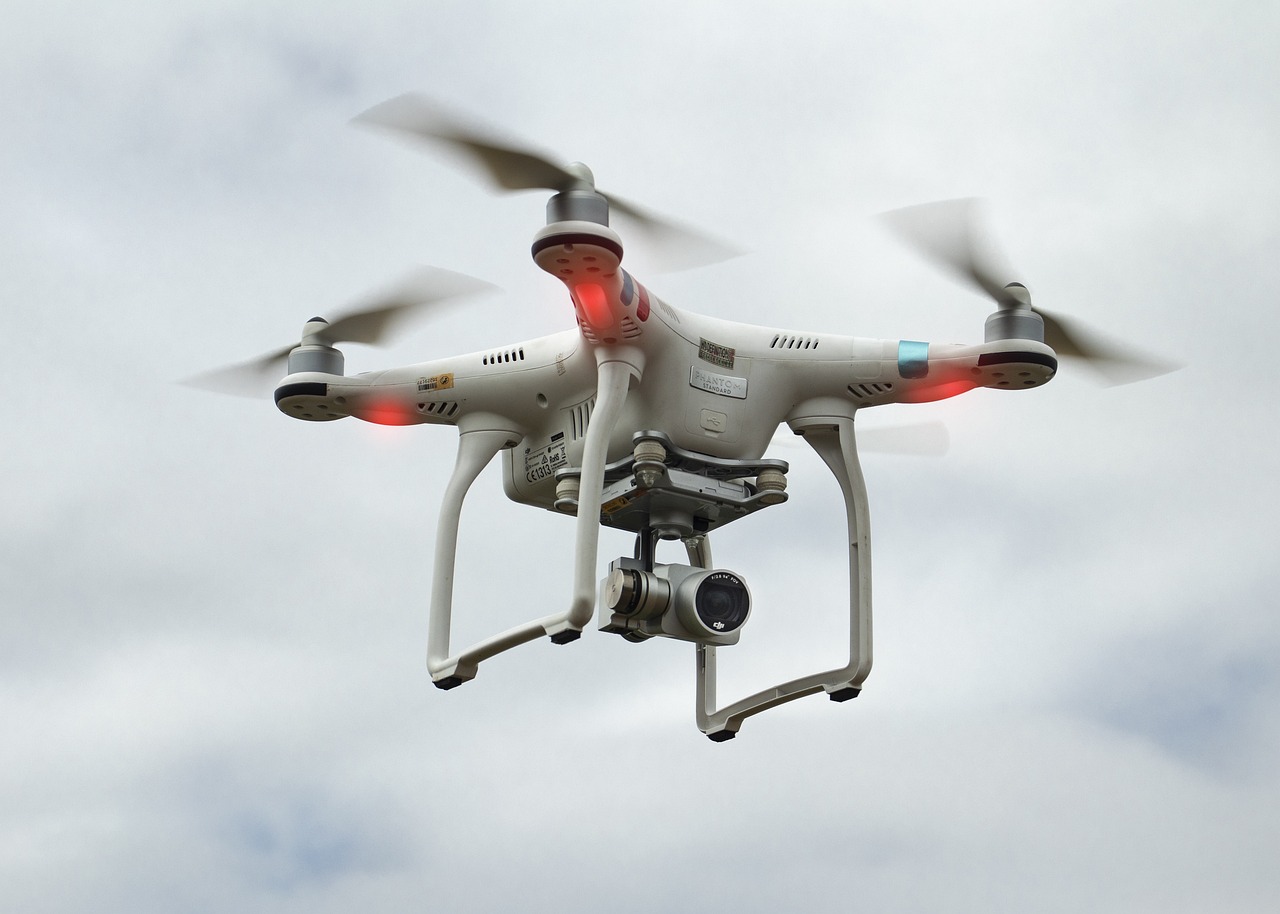
Data Collection and Analysis
The role of drones in military surveillance has revolutionized the way data is collected and analyzed on the battlefield. These unmanned aerial vehicles (UAVs) are equipped with sophisticated technology that allows them to gather vast amounts of information in real-time, providing military strategists with critical insights for decision-making. Imagine having a bird's-eye view of a battlefield, where every movement is tracked, and every detail is captured. This is precisely what modern drones offer, and it's changing the game for military operations.
During surveillance missions, drones utilize a variety of sensors and cameras to collect data. The data collected can range from high-resolution imagery to infrared readings, which are crucial for identifying enemy positions and movements, even in low visibility conditions. The integration of AI capabilities enhances the drones' ability to process this data on the fly, allowing for immediate analysis and actionable intelligence. For instance, when a drone captures footage of a potential threat, AI algorithms can quickly analyze the images to determine the nature of the threat, significantly speeding up the decision-making process.
Once the data is collected, the next step is analysis. This is where the true power of drone technology shines. Utilizing advanced software, military analysts can sift through the mountains of data gathered during a mission. They can create detailed reports that summarize findings, highlight potential threats, and even predict enemy movements based on historical data. The ability to analyze data in real-time not only enhances situational awareness but also allows military leaders to make informed decisions swiftly.
Moreover, the use of drones for data collection is not limited to just surveillance. They can also be employed for reconnaissance missions, where they gather intelligence on enemy installations and troop movements. This intelligence is invaluable for planning operations and ensuring the safety of military personnel. The data collected can be stored and analyzed over time, providing a comprehensive view of enemy activities and trends.
To illustrate the significance of data analysis in drone surveillance, consider the following table that highlights the types of data collected and their applications:
| Type of Data | Application |
|---|---|
| High-Resolution Imagery | Identifying enemy locations and infrastructure |
| Infrared Data | Detecting heat signatures of personnel or vehicles |
| Radar Data | Tracking moving targets and monitoring airspace |
| Signal Intelligence | Interception of communications for strategic insights |
As military operations evolve, so too does the technology behind drone data collection and analysis. The continued development of machine learning and data analytics tools promises to enhance the capabilities of drones even further. With these advancements, we can expect drones to not only collect data but also interpret it, providing military personnel with predictive insights that could save lives and resources.
In conclusion, the integration of drones into military surveillance operations has fundamentally transformed data collection and analysis. With their ability to gather and process vast amounts of information quickly, drones are not just tools of observation; they are essential assets in modern warfare, enabling military forces to stay one step ahead of their adversaries.
- What types of data can military drones collect? Military drones can collect high-resolution imagery, infrared data, radar data, and signal intelligence, among others.
- How does AI enhance drone surveillance? AI enables drones to process data in real-time, allowing for immediate analysis and quicker decision-making.
- What are the primary applications of drone data? Drone data is used for identifying enemy locations, detecting heat signatures, tracking moving targets, and intercepting communications.
- How is the data from drones analyzed? The data collected is analyzed using advanced software, which helps military analysts create detailed reports and insights for strategic planning.
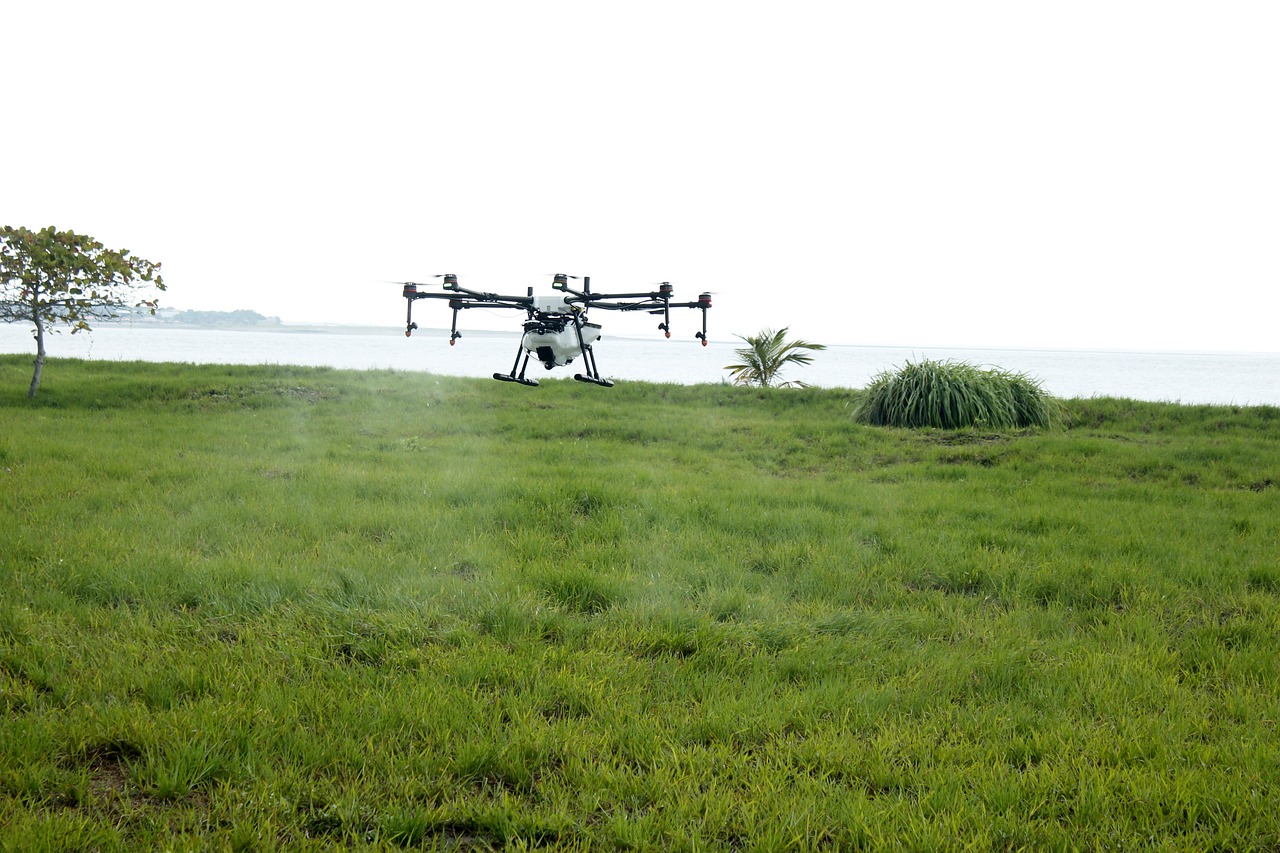
Real-Time Communication Systems
In the fast-paced world of military operations, are nothing short of revolutionary. These technologies allow drones to transmit critical data and imagery instantaneously to command centers, creating a seamless flow of information that can be the difference between success and failure on the battlefield. Imagine a drone hovering silently above a conflict zone, its cameras capturing high-definition images while simultaneously relaying this data back to strategists thousands of miles away. This capability enables military personnel to make informed decisions in real time, enhancing operational effectiveness and responsiveness.
One of the most significant advancements in real-time communication is the use of satellite communication (SATCOM). This technology allows drones to maintain a connection with command centers, even in remote areas where traditional communication networks are unavailable. The integration of SATCOM into drone operations has transformed how military forces conduct surveillance and gather intelligence. With the ability to send and receive data from virtually anywhere, commanders can adjust tactics on the fly, ensuring that their strategies are always aligned with the current battlefield dynamics.
Moreover, the implementation of secure communication protocols ensures that the data transmitted between drones and command centers is protected from interception and hacking attempts. This is crucial, as the sensitive nature of military operations demands a high level of security. Advanced encryption techniques are employed to safeguard communications, ensuring that only authorized personnel can access the information. As military drones continue to evolve, so too do the technologies that protect them, creating a robust framework for secure and effective operations.
Another key aspect of real-time communication systems is the use of data fusion technologies. These systems integrate data from various sources, including multiple drones and ground units, to create a comprehensive operational picture. By synthesizing information from different sensors and platforms, military strategists can gain insights that are far more detailed and accurate than what a single drone could provide. This holistic approach to data analysis not only enhances situational awareness but also improves decision-making processes in complex operational environments.
In summary, the evolution of real-time communication systems has profoundly impacted military drone operations. As technology continues to advance, we can expect even greater improvements in data transmission and security. The ability to access and analyze real-time data will undoubtedly shape the future of military strategy, ensuring that armed forces remain one step ahead of potential threats.
- What are real-time communication systems in military drones?
Real-time communication systems are technologies that allow drones to transmit data and imagery instantly to command centers, facilitating immediate decision-making and tactical planning. - How do satellite communication systems enhance drone operations?
Satellite communication (SATCOM) enables drones to maintain connectivity in remote areas, allowing for continuous data transmission even when traditional networks are unavailable. - What measures are taken to secure drone communications?
Advanced encryption techniques and secure communication protocols are employed to protect the data transmitted between drones and command centers from unauthorized access. - How does data fusion improve military operations?
Data fusion integrates information from various sources to create a comprehensive operational picture, enhancing situational awareness and improving decision-making in complex environments.
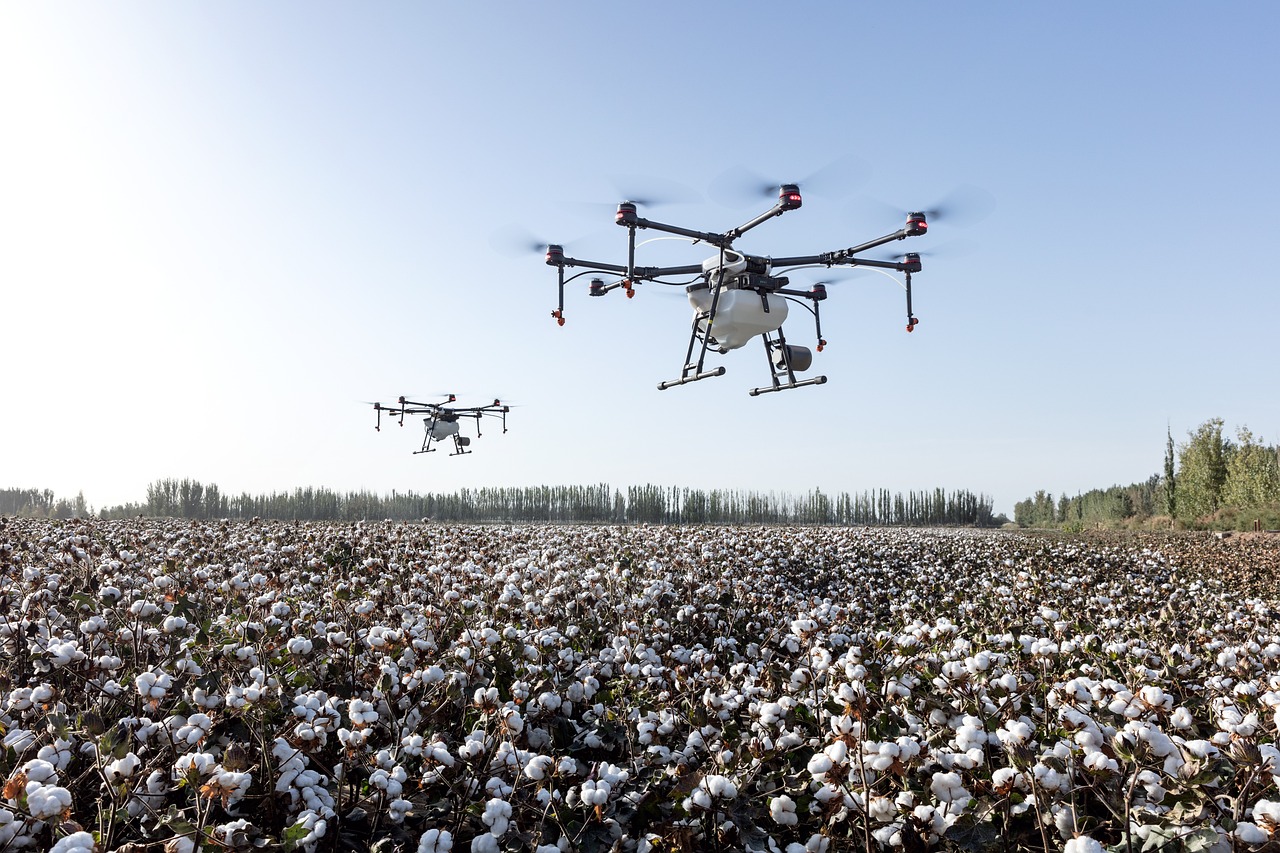
Impact on Military Strategy
The integration of drones into military operations has fundamentally transformed the landscape of strategic planning and battlefield tactics. No longer are military leaders solely reliant on traditional reconnaissance methods; drones have ushered in a new era of surveillance that enhances situational awareness and operational efficiency. Imagine being able to scout an entire area without putting personnel at risk—this is the reality that drones bring to the table. By providing real-time data and imagery, drones have shifted the paradigm of how military forces gather intelligence.
One of the most significant impacts of drone technology is its ability to conduct persistent surveillance. Drones can loiter over an area for extended periods, collecting data continuously without the limitations faced by manned aircraft. This capability allows military strategists to monitor enemy movements and activities in ways that were previously unimaginable. For instance, during operations in conflict zones, drones can provide invaluable insights into troop deployments, supply routes, and even the presence of non-combatants, enabling more informed decision-making.
Furthermore, the data collected by drones can be rapidly analyzed using advanced algorithms and artificial intelligence, which enhances the speed at which actionable intelligence can be derived. This not only accelerates the decision-making process but also allows for a more agile response to emerging threats. In essence, the battlefield has become a dynamic environment where information is power, and drones serve as the eyes and ears of military forces, providing a strategic advantage.
However, the impact of drones on military strategy is not solely about enhancing surveillance capabilities. The use of drones has also led to a rethinking of operational tactics. For example, the ability to conduct precision strikes with minimal collateral damage has changed how military operations are planned and executed. Commanders can now consider options that were previously deemed too risky or impractical. This shift has implications not only for combat scenarios but also for humanitarian missions, where the protection of civilian lives is paramount.
Moreover, the integration of drones into military strategy has fostered a more collaborative approach to operations. Drones can relay data to multiple units in real-time, allowing for coordinated efforts across different branches of the military. This interconnectedness enhances overall mission effectiveness and ensures that all units are on the same page, reducing the chances of miscommunication or operational failures.
While the benefits of drone integration are clear, it is essential to acknowledge that this shift also presents new challenges. Military strategists must continuously adapt to rapidly evolving drone technologies and the tactics employed by adversaries to counteract these advancements. As drones become more prevalent, the need for counter-drone strategies will also increase, leading to an ongoing arms race in surveillance technology.
In conclusion, the impact of drones on military strategy is profound and multifaceted. They have revolutionized how intelligence is gathered, how operations are planned, and how military forces engage with threats. As technology continues to advance, it is likely that the role of drones in military strategy will only grow, making them an indispensable tool in the arsenal of modern warfare.
- How do drones enhance military surveillance? Drones provide real-time data, persistent surveillance, and the ability to conduct reconnaissance without putting personnel at risk.
- What are the strategic advantages of using drones? Drones offer enhanced situational awareness, faster decision-making, and the ability to conduct precision strikes with minimal collateral damage.
- Are there ethical concerns surrounding military drones? Yes, there are ethical implications related to privacy, civilian safety, and the responsibilities of military personnel in drone operations.
- What challenges do military drones face? Drones encounter technical limitations like battery life, weather constraints, and the need for advanced navigation systems.
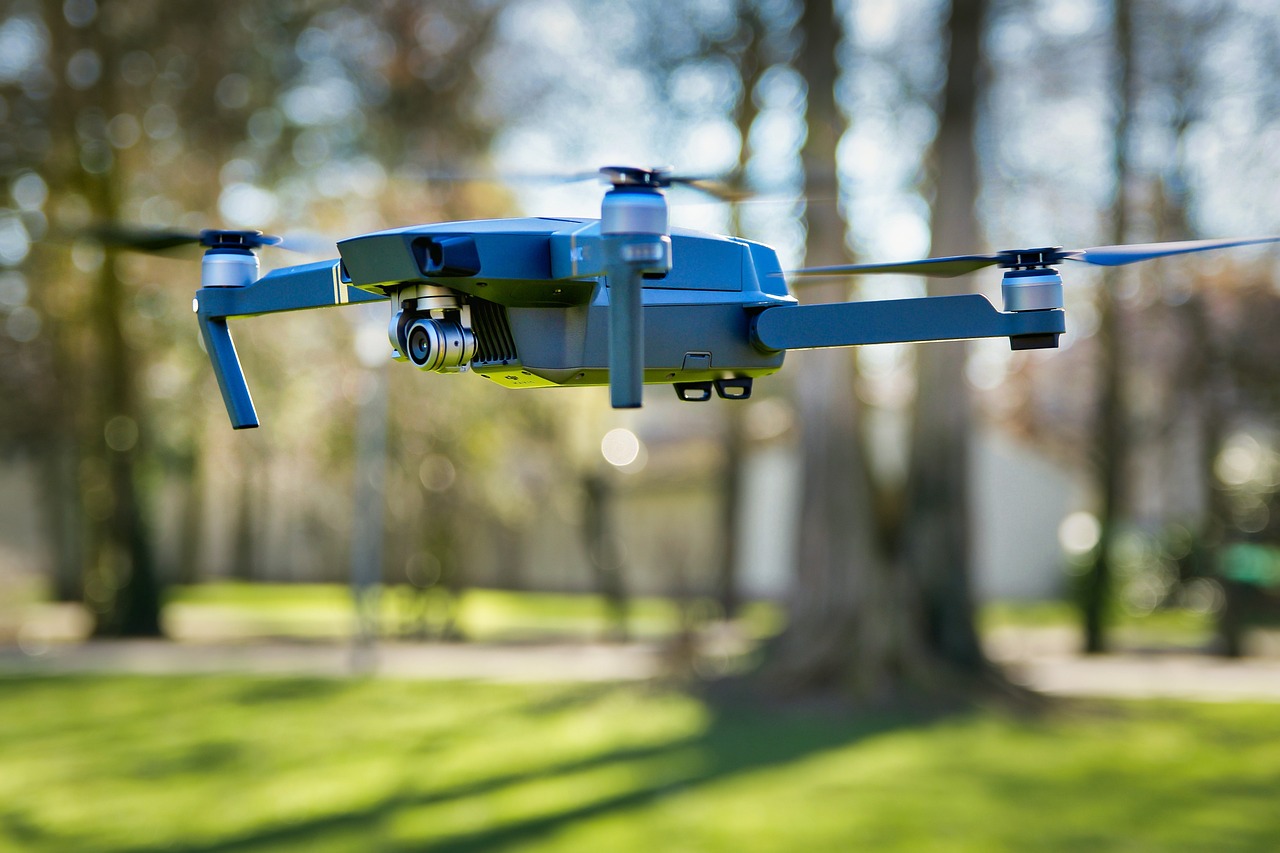
Operational Challenges of Drone Surveillance
The integration of drones into military surveillance operations has undoubtedly revolutionized the way intelligence is gathered and analyzed. However, this advancement is not without its operational challenges. As military organizations strive to leverage the full potential of drone technology, they encounter a myriad of issues that can hinder effectiveness and efficiency.
One of the most pressing challenges is the technical limitations associated with drone operations. For instance, battery life remains a significant constraint. Most military drones are designed to operate for limited durations—typically ranging from 10 to 30 hours, depending on the model and mission requirements. This limitation can restrict the scope of surveillance missions, particularly in vast or hostile environments where constant monitoring is crucial. Furthermore, adverse weather conditions can severely impact drone performance. High winds, rain, and fog can not only disrupt flight stability but also diminish the quality of the data collected. As such, military planners must carefully consider weather forecasts when scheduling drone operations.
Another critical aspect is the regulatory issues surrounding drone usage. Military operations are governed by a complex web of national and international laws that dictate how and where drones can be deployed. These regulations are often designed to protect civilian populations and airspace, but they can also complicate military operations. For instance, navigating airspace restrictions can lead to delays and increased operational costs. Additionally, military personnel must be well-versed in these regulations to avoid potential legal repercussions, which can further complicate mission planning.
Moreover, the ethical implications of drone surveillance cannot be overlooked. The use of drones raises significant privacy concerns, particularly in areas where civilian populations are present. The ability of drones to capture high-resolution imagery can inadvertently lead to the surveillance of innocent civilians, sparking debates about the balance between national security and individual rights. Military personnel face the moral responsibility of ensuring that their operations do not infringe upon the privacy of non-combatants. This ethical dilemma is compounded by the potential for drone strikes to result in civilian casualties, which can have devastating effects on public perception and international relations.
In addition to ethical considerations, the need for robust cybersecurity measures is paramount. As drones become increasingly reliant on technology for data transmission and navigation, they also become vulnerable to cyber attacks. Hackers could potentially intercept sensitive data or even take control of drone operations, posing a significant threat to military strategies. Therefore, military organizations must invest in advanced cybersecurity protocols to safeguard their drone systems and the data they collect.
To summarize, the operational challenges of drone surveillance are multifaceted and require careful consideration. From technical limitations and regulatory hurdles to ethical dilemmas and cybersecurity threats, military organizations must navigate a complex landscape to effectively utilize drone technology. Addressing these challenges is crucial for ensuring that drones can fulfill their potential as invaluable assets in modern military operations.
- What are the main technical limitations of military drones?
Military drones often face challenges such as limited battery life, weather constraints, and the need for advanced navigation systems, which can impact their effectiveness in surveillance operations.
- How do regulations affect drone operations?
Regulations surrounding drone usage can complicate military operations by imposing restrictions on where and how drones can be deployed, potentially leading to delays and increased costs.
- What ethical concerns are associated with drone surveillance?
Drone surveillance raises privacy concerns, particularly regarding the potential for monitoring innocent civilians and the moral responsibilities of military personnel in ensuring civilian safety.
- Why is cybersecurity important for military drones?
As drones rely on technology for data transmission and navigation, they are vulnerable to cyber attacks, making robust cybersecurity measures essential to protect sensitive information and maintain operational integrity.
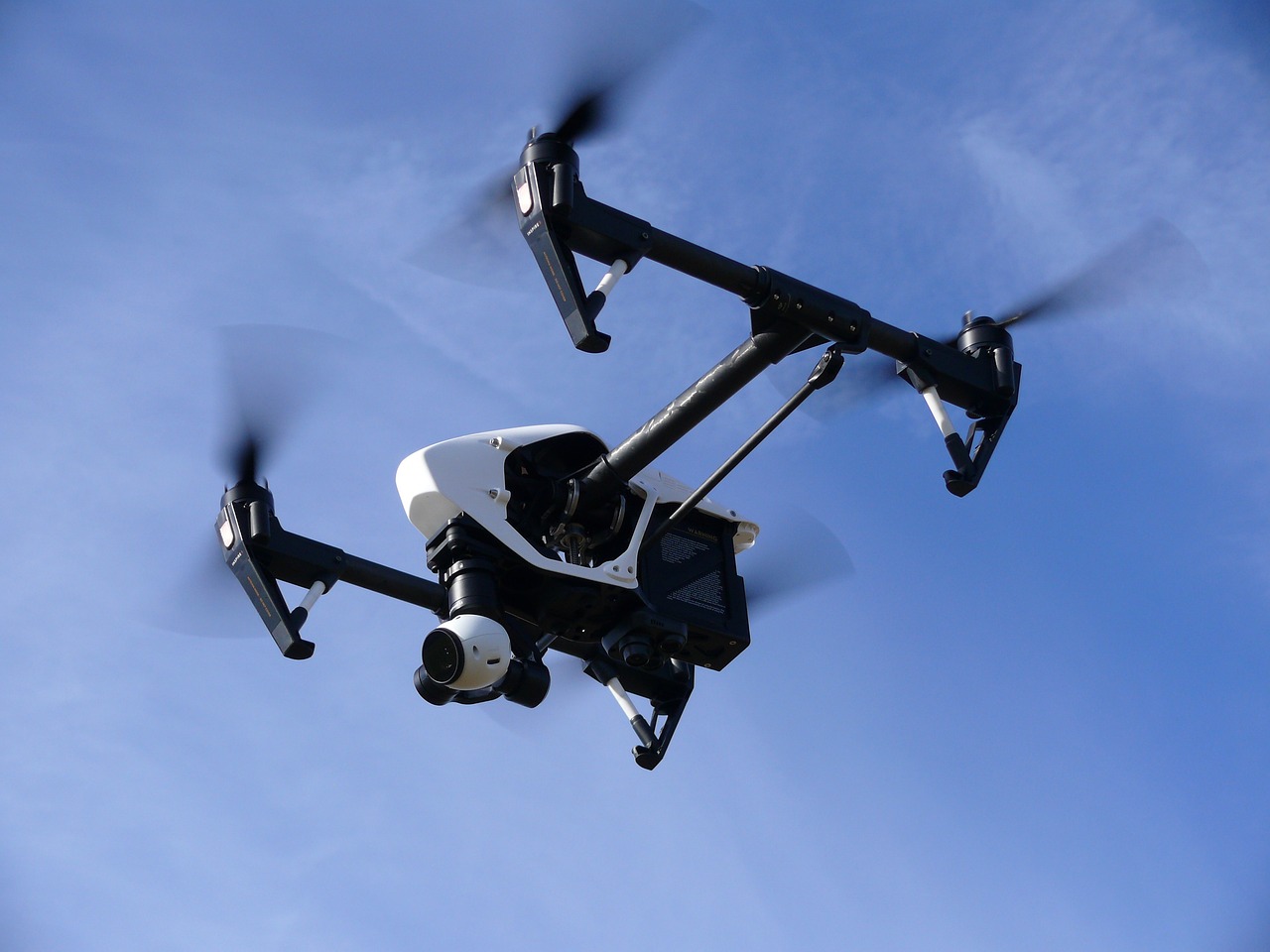
Ethical Considerations
When it comes to the use of drones in military surveillance, ethical considerations are at the forefront of the debate. The ability to gather intelligence from the sky raises significant questions about privacy, civilian safety, and the moral implications of remote warfare. As drones become more prevalent in military operations, society must grapple with the balance between national security and individual rights.
One of the most pressing issues is the potential for invasion of privacy. Drones equipped with advanced surveillance technology can capture high-resolution images and videos, often without the knowledge of those being monitored. This capability leads to concerns about how data is collected and used. Are there sufficient regulations in place to protect the privacy of civilians? The answer is often murky, as the technology outpaces existing laws designed to safeguard individual rights.
Moreover, the use of drones in military operations can unintentionally put civilian lives at risk. While drones are designed to minimize collateral damage, the reality is that mistakes can happen. There have been instances where drone strikes have resulted in civilian casualties, raising ethical questions about the responsibility of military personnel in these operations. How can military leaders justify the loss of innocent lives in the pursuit of tactical advantages? This dilemma is further complicated by the fact that drone operators are often thousands of miles away from the battlefield, potentially desensitizing them to the consequences of their actions.
Additionally, the moral implications of using drones for surveillance and targeted strikes cannot be overlooked. The concept of "remote warfare" raises questions about the human element in military engagements. When operators are detached from the immediate realities of combat, does this lead to a more cavalier attitude towards life and death decisions? The psychological impact on drone operators themselves is also a concern, as they may experience stress and trauma from their remote involvement in warfare, despite being physically distant from the conflict.
To address these ethical challenges, there is a growing call for comprehensive guidelines and regulations governing drone operations. Transparency in military actions, accountability for decisions made, and the establishment of ethical frameworks are essential for ensuring that drone surveillance is conducted responsibly. Furthermore, public discourse on these issues is crucial, as it fosters a better understanding of the implications of drone technology in military contexts.
In conclusion, while drones offer significant advantages in military surveillance, their use is fraught with ethical considerations that must be carefully navigated. As we advance further into the era of drone warfare, it is essential to prioritize the protection of individual rights, civilian safety, and the moral responsibilities that come with wielding such powerful technology.
- What are the main ethical concerns regarding military drones? The primary concerns include privacy invasion, civilian safety, and the moral implications of remote warfare.
- How do military drones impact civilian populations? Drones can unintentionally harm civilians during surveillance and targeted strikes, raising significant ethical questions.
- What measures can be taken to ensure ethical drone use? Establishing comprehensive guidelines, increasing transparency, and fostering public discourse are essential steps.
- Can drone operators experience psychological effects from their work? Yes, despite being physically distant, operators can experience stress and trauma related to their involvement in military actions.
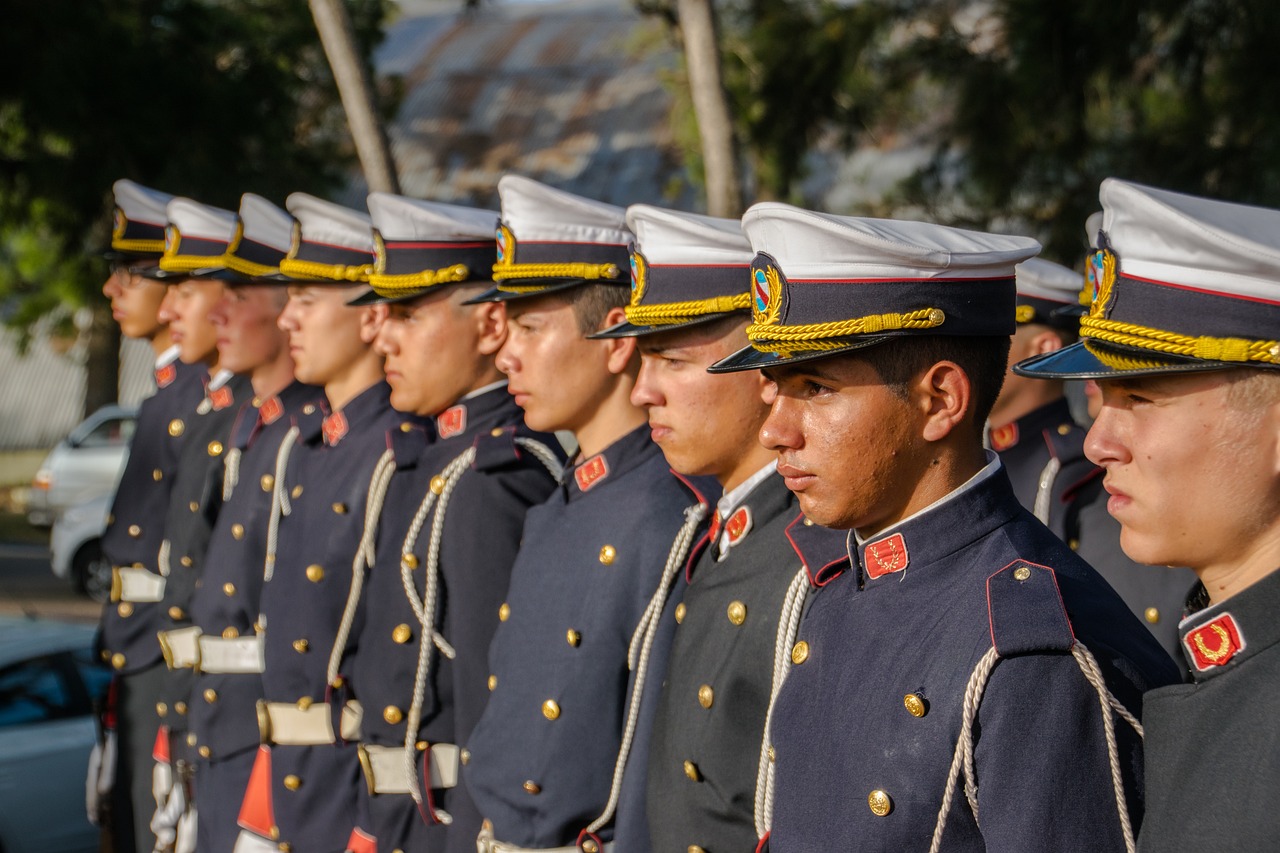
Technical Limitations
While military drones have revolutionized surveillance operations, they are not without their . Understanding these constraints is crucial for military strategists and operators who rely on these high-tech tools for intelligence gathering. One of the most significant challenges is battery life. Many drones are limited by how long they can stay airborne, which can range from just a few hours to a maximum of around 24 hours, depending on the model and its intended use. This limitation necessitates frequent recharging or swapping out drones, which can disrupt operations and reduce overall effectiveness.
Moreover, weather conditions can severely impact drone operations. Heavy rain, strong winds, and poor visibility can hinder a drone's ability to gather data accurately. For instance, infrared sensors may struggle to penetrate fog or heavy cloud cover, limiting their effectiveness in certain environments. As a result, military planners must consider weather forecasts and environmental conditions when deploying drones, which can complicate mission planning.
Another technical hurdle is the need for advanced navigation systems. Drones often operate in complex environments where GPS signals can be weak or unreliable. This is particularly true in urban settings or mountainous regions, where obstacles can interfere with navigation. As such, drones require sophisticated algorithms and sensors to navigate effectively, which can increase their cost and complexity.
Additionally, the data processing capabilities of drones are vital to their success. While many drones are equipped with high-resolution cameras and advanced sensors, the sheer volume of data they collect can overwhelm onboard processing systems. This necessitates the need for robust data transmission systems to relay information back to command centers for analysis. However, if the communication systems fail or are compromised, the entire operation can be jeopardized, leading to a loss of critical intelligence.
Finally, cybersecurity threats pose a significant risk to drone operations. As military drones become increasingly integrated with networked systems, they become more vulnerable to hacking and electronic warfare. Adversaries could potentially intercept data streams or even take control of drones, leading to catastrophic outcomes. Therefore, military organizations must prioritize cybersecurity measures to safeguard sensitive information and ensure the integrity of their drone operations.
In summary, while drones are powerful assets in military surveillance, their technical limitations—ranging from battery life and weather dependencies to navigation challenges and cybersecurity risks—must be addressed to maximize their effectiveness. Understanding these limitations allows military planners to develop more effective strategies that leverage drone technology while mitigating potential risks.
- What are the main technical limitations of military drones? Military drones face challenges such as limited battery life, sensitivity to weather conditions, the need for advanced navigation systems, data processing capabilities, and cybersecurity threats.
- How does weather affect drone operations? Adverse weather conditions such as rain, fog, and strong winds can hinder the effectiveness of drones, making it difficult to gather accurate data.
- What measures are taken to enhance drone cybersecurity? Military organizations implement various cybersecurity protocols, including encryption and secure communication channels, to protect drone operations from hacking and data breaches.
- Can drones operate in urban areas? Yes, but urban environments pose unique challenges for navigation and data collection due to GPS interference and obstacles.
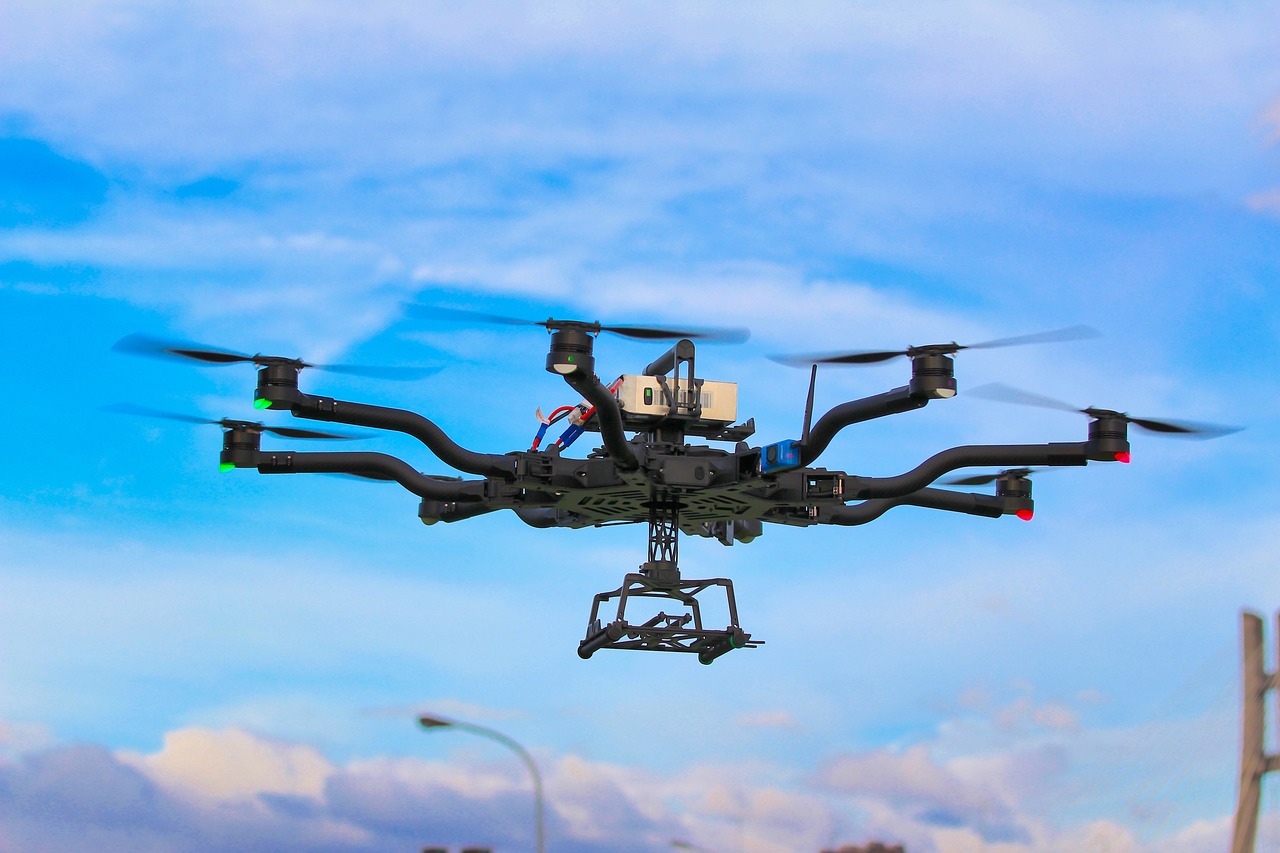
The Future of Drone Surveillance in Military Operations
The future of drone surveillance in military operations is poised to be nothing short of revolutionary. As technology continues to advance at an astonishing pace, the capabilities of drones are expanding, leading to unprecedented changes in how military operations are conducted. Imagine a battlefield where drones equipped with cutting-edge technology can provide real-time intelligence, monitor enemy movements, and even assist in decision-making processes. This is not just a distant dream; it is becoming a reality.
One of the most exciting developments on the horizon is the integration of artificial intelligence (AI) into drone systems. AI can enhance the ability of drones to analyze data, recognize patterns, and make decisions autonomously. This means that drones could potentially identify threats or targets without needing constant human oversight, significantly speeding up response times. For instance, if a drone detects unusual activity in a designated area, it could autonomously relay this information to command centers, allowing for immediate tactical adjustments.
Moreover, advancements in swarming technology are set to transform military operations. Swarming involves multiple drones operating together as a cohesive unit, sharing information and executing missions collaboratively. This could lead to more effective reconnaissance missions, as swarms can cover larger areas and gather data from multiple perspectives simultaneously. Imagine a fleet of drones working in unison to create a comprehensive surveillance network, making it nearly impossible for adversaries to hide.
However, with these advancements come significant challenges that need to be addressed. The potential for increased cybersecurity threats is a pressing concern. As drones become more interconnected and dependent on data networks, they also become more vulnerable to hacking and cyber attacks. Ensuring robust security measures will be essential to protect sensitive information and maintain operational integrity.
Another important aspect of the future of drone surveillance is the ethical implications of their use. As drones become more autonomous, questions arise about accountability and the moral responsibilities of military personnel. How do we ensure that drones are used ethically, especially in complex environments where civilian lives may be at risk? These are critical discussions that need to take place as drone technology evolves.
In conclusion, the future of drone surveillance in military operations is bright yet complex. As we stand on the brink of a new era in military technology, it is essential to balance innovation with ethical considerations and security measures. The potential for drones to enhance military effectiveness is immense, but it must be harnessed responsibly to ensure that their use aligns with international norms and values.
- What are the main advantages of using drones in military surveillance?
Drones offer real-time intelligence, can cover vast areas quickly, and reduce the risk to human personnel during reconnaissance missions. - How does AI improve drone surveillance capabilities?
AI enhances data analysis, enabling drones to identify threats and make autonomous decisions, which leads to faster response times. - What are the ethical concerns surrounding military drones?
Key concerns include civilian safety, privacy issues, and the accountability of military personnel in drone operations. - Will drones replace traditional reconnaissance methods?
While drones will enhance reconnaissance capabilities, they are likely to complement rather than completely replace traditional methods.
Frequently Asked Questions
- What are military drones used for in surveillance operations?
Military drones are primarily used for reconnaissance, intelligence gathering, and monitoring enemy movements. They provide real-time data and high-resolution imagery, allowing military personnel to make informed decisions quickly.
- How have drones evolved over time?
The evolution of military drones has seen significant advancements from basic remote-controlled aircraft to sophisticated systems equipped with high-resolution cameras, AI capabilities, and advanced sensor technologies. Key milestones include the introduction of UAVs (Unmanned Aerial Vehicles) in the 1990s and the integration of real-time data processing in recent years.
- What technological advancements enhance drone surveillance?
Technological advancements such as high-resolution cameras, infrared sensors, and AI-driven analytics have dramatically improved drone surveillance. These technologies allow for better target acquisition and more efficient data collection, enabling military operations to be conducted with greater accuracy and effectiveness.
- What are some challenges faced by military drones?
Military drones face several challenges, including technical limitations like battery life and weather constraints, as well as regulatory issues and ethical concerns regarding privacy and civilian safety. Additionally, robust cybersecurity measures are essential to protect sensitive data collected during missions.
- What ethical considerations surround the use of drones in military operations?
The use of drones raises important ethical questions, particularly regarding privacy, civilian safety, and the responsibilities of military personnel. Balancing the need for surveillance with the potential for unintended consequences is a critical issue in drone operations.
- What is the future of drone surveillance in military operations?
The future of drone surveillance is likely to include even more advanced technologies, such as enhanced AI capabilities and improved communication systems. As military strategies evolve, drones will play an increasingly vital role in global security and defense initiatives, shaping the landscape of modern warfare.

